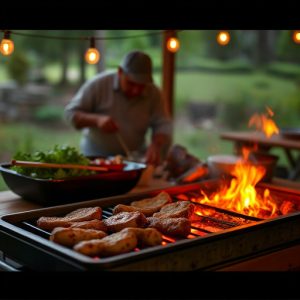Slow cooking is a game-changer for transforming tough cuts of meat, like beef brisket, into tender, flavorful dishes. To craft exceptional BBQ Beef Brisket, use specific equipment (slow cooker or Dutch oven) to evenly distribute heat and develop deep flavors. The secret lies in the right balance of aromatic spices, especially a personalized dry rub seasoning, which creates a caramelized crust during slow cooking. Smoking is key for adding unique aromas and flavor; direct smoking over oak/hickory chips at 225°F (107°C) or trying alternative techniques enhances the brisket's taste. After 8-10 hours on low heat, rest the brisket, slice it, and serve with traditional sides like crispy onions, coleslaw, and cornbread for a classic BBQ experience. Store leftovers safely for up to 4 days in the fridge or freeze for up to 3 months.
- Understanding Beef Brisket: Cut, Marbling, and Its Unique Characteristics
- The Art of Slow Cooking: Why It's Ideal for Brisket and Equipment Required
- Seasoning 101: Crafting the Perfect Dry Rub for Smoky Flavor
- Smoking Techniques: Adding That Distinct BBQ Aura to Your Brisket
- Step-by-Step Slow Cook Method: From Preheating to Resting
- Common Mistakes to Avoid: Ensuring the Best Possible Result
- Serving Suggestions: Accompaniments and Sauces for a Classic BBQ Feast
- Tips for Leftovers: Reheating and Storing Techniques
Understanding Beef Brisket: Cut, Marbling, and Its Unique Characteristics
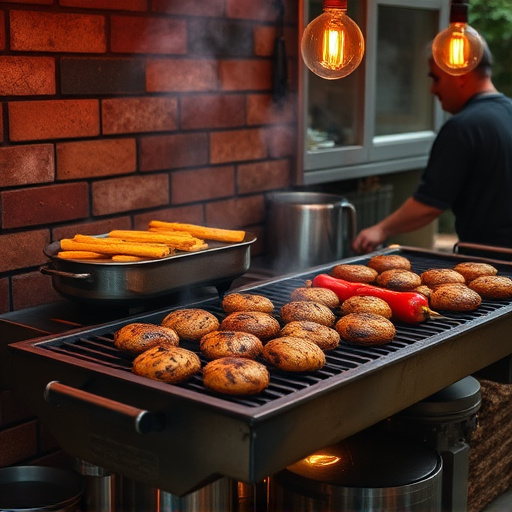
Beef brisket, a cut from the breast of the cow, is a true delicacy among BBQ enthusiasts. Its unique characteristics stem from its marbling—the fat striated throughout the muscle tissue. This fat not only adds flavor but also keeps the brisket moist and tender during slow cooking, resulting in a mouthwatering texture and taste. When preparing a BBQ Beef Brisket Recipe, understanding the cut’s intricate structure is key to achieving perfection.
The brisket consists of two main sections: the point (a leaner end) and the flat (richer in marbling). This diversity in fat content means different cooking times and temperatures for each part. The slow-cooking process allows these flavors to meld, creating a rich, smoky taste that’s characteristic of authentic BBQ Beef Brisket recipes. Its tender, almost melting quality is what makes it a favorite among BBQ lovers, perfect for slicing or pulling apart with your hands—a true testament to its unique culinary profile.
The Art of Slow Cooking: Why It's Ideal for Brisket and Equipment Required
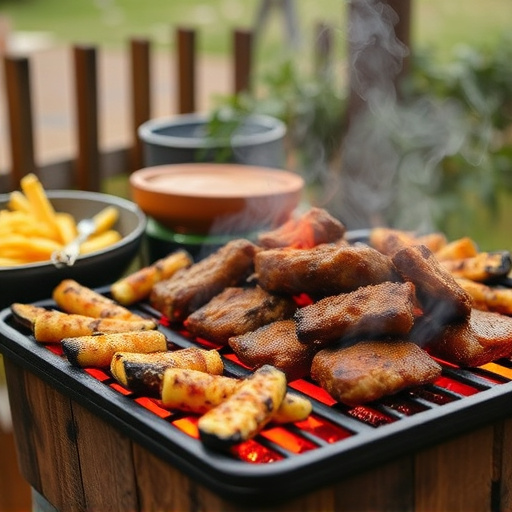
Slow cooking is an art that transforms tough cuts of meat, like beef brisket, into melt-in-your-mouth delicacies. When it comes to BBQ Beef Brisket Recipe, this method is a game-changer. The low and slow technique allows for deep flavors to develop, enhancing the natural juices and tenderizing the meat over time. This process is particularly ideal for brisket as it breaks down connective tissues, making it incredibly flavorful and succulent.
To master this culinary art, you’ll need specific equipment. A slow cooker or Dutch oven is essential for a successful BBQ Beef Brisket. These tools ensure even heat distribution, which is crucial for slow-cooking perfection. A good quality beef brisket, a selection of aromatic spices, and a hearty BBQ sauce will complete your arsenal, allowing you to craft a mouthwatering dish that’s sure to impress any BBQ enthusiast.
Seasoning 101: Crafting the Perfect Dry Rub for Smoky Flavor

The key to unlocking a truly exceptional BBQ Beef Brisket Recipe lies in the seasoning—specifically, crafting the perfect dry rub. Dry rubs are a blend of spices that enhance the natural flavors of the meat, imparting depth and complexity. For smoky flavor, key ingredients include paprika, brown sugar, garlic powder, salt, pepper, and a touch of chili powder or cayenne. These seasonings not only add delicious taste but also help to caramelize during slow cooking, creating a delectable crust.
When preparing your dry rub, remember that balance is crucial. Too much of one spice can overpower the others, so measure carefully. Also, consider adjusting the mix based on personal preference and the desired level of heat—whether you prefer it mild, medium, or spicy. Once your dry rub is ready, generously coat the beef brisket before placing it in the slow cooker for a long, slow cook that will result in tender, smoky goodness.
Smoking Techniques: Adding That Distinct BBQ Aura to Your Brisket
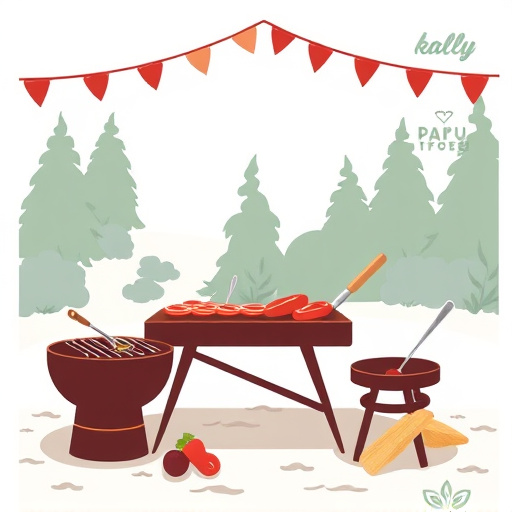
Smoking is a technique that elevates BBQ beef brisket recipes to new heights, infusing the meat with a distinct smoky aroma and flavor. It’s a slow process that requires patience but yields incredibly tender, juicy results. The most common method involves using a smoker, which allows for low and steady temperature control, crucial for breaking down the brisket’s tough connective tissues.
Different smoking techniques offer unique BBQ beef brisket recipes. For a classic Texas-style flavor, direct smoking over oak or hickory wood chips is a popular choice. This technique involves maintaining a constant temperature around 225°F (107°C) for several hours, allowing the smoke to penetrate and flavor the meat evenly. Alternative methods like indirect or cold smoking can also be employed, each contributing to the overall complexity and depth of the brisket’s taste.
Step-by-Step Slow Cook Method: From Preheating to Resting
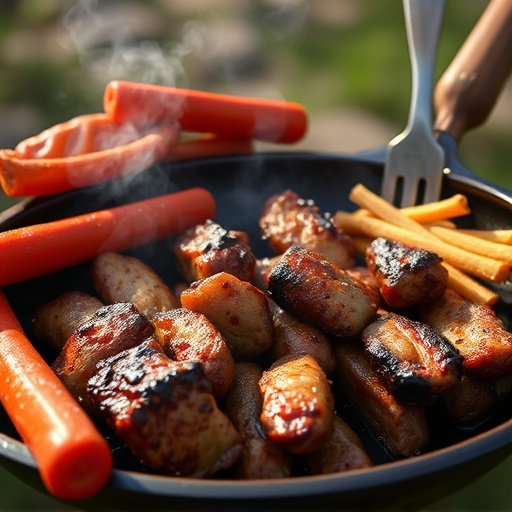
To achieve that perfect, smoky BBQ Beef Brisket Recipe, preheat your slow cooker to around 275°F (135°C). This gentle cooking temperature is key to transforming the tough brisket muscle into tender, juicy meat. Start by seasoning your beef brisket generously with a dry rub of salt, pepper, and your favorite BBQ spices. Place the seasoned brisket in the slow cooker, fat side up, as this will help render the fat and keep the meat moist during the long cook.
Once the brisket is secured in the pot, add about 1/2 cup of BBQ sauce or broth to the bottom for extra moisture and flavor. Set your slow cooker on low and let it work its magic for 8-10 hours, or until the brisket is incredibly tender and easily shreds with a fork. Remember, patience is paramount when it comes to slow cooking; the longer it cooks, the more flavorful and tender it will become. After the brisket is done, carefully remove it from the pot and let it rest for 30 minutes before slicing or shredding. This resting period allows the juices to redistribute throughout the meat, ensuring each bite is infused with rich, smoky flavor.
Common Mistakes to Avoid: Ensuring the Best Possible Result
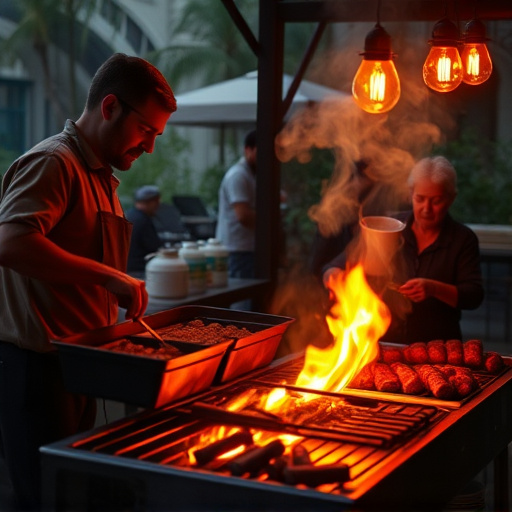
Serving Suggestions: Accompaniments and Sauces for a Classic BBQ Feast
For a true BBQ feast, serve your slow-cooked beef brisket with classic accompaniments and sauces. Crispy fried onions and a hearty coleslaw cut through the rich meat, while homemade barbecue sauce or a tangy mustard glaze adds extra smokiness. Baked beans, cornbread, and potato salad round out this traditional side dish lineup, offering a balanced mix of flavors and textures that complement the classic BBQ beef brisket recipe perfectly.
Tips for Leftovers: Reheating and Storing Techniques
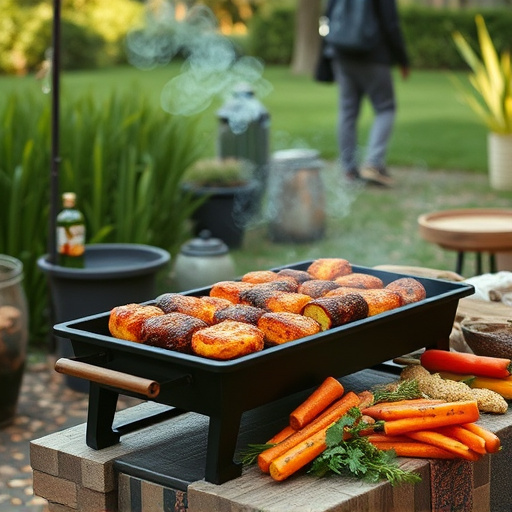
When it comes to leftovers, slow-cooked BBQ beef brisket is a true champion. To maintain its mouthwatering flavor and texture, store it properly in an airtight container in the refrigerator. Consume within 3-4 days for optimal taste. Reheating is easy—either slice and warm in the microwave or transfer to a skillet over low heat. For best results, avoid overcooking by keeping an eye on the temperature and adjusting the heat source accordingly.
For longer-term storage, consider freezing individual portions. Place the brisket slices in freezer-safe bags, ensuring they’re laid flat for even freezing. Frozen BBQ beef brisket can last up to 3 months. When ready to enjoy, thaw overnight in the refrigerator before reheating. With these simple techniques, you can savor the deliciousness of your slow-cooked BBQ beef brisket recipe long after the initial feast.
